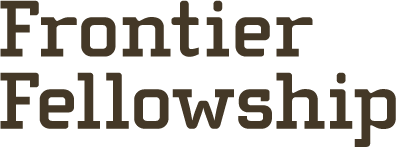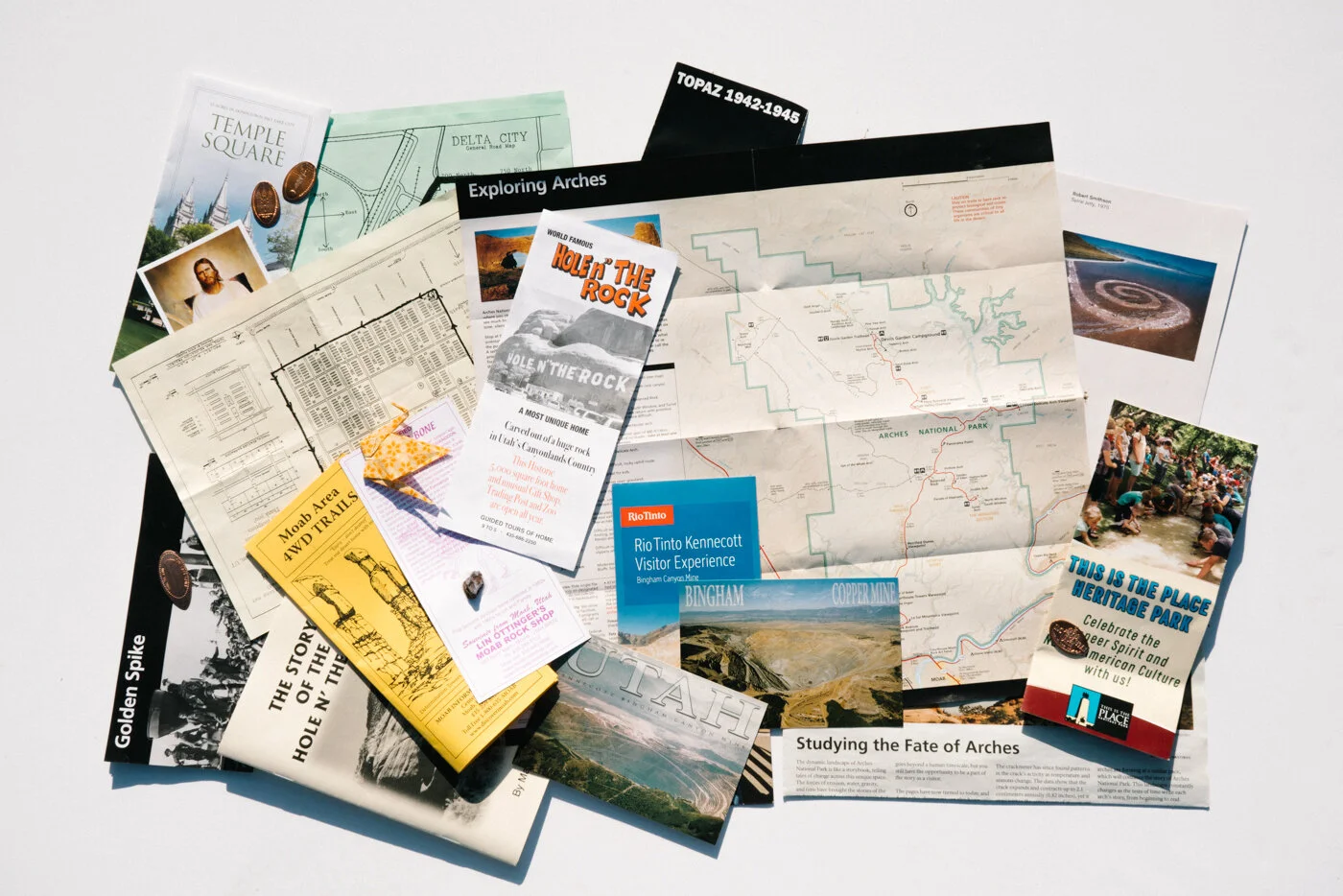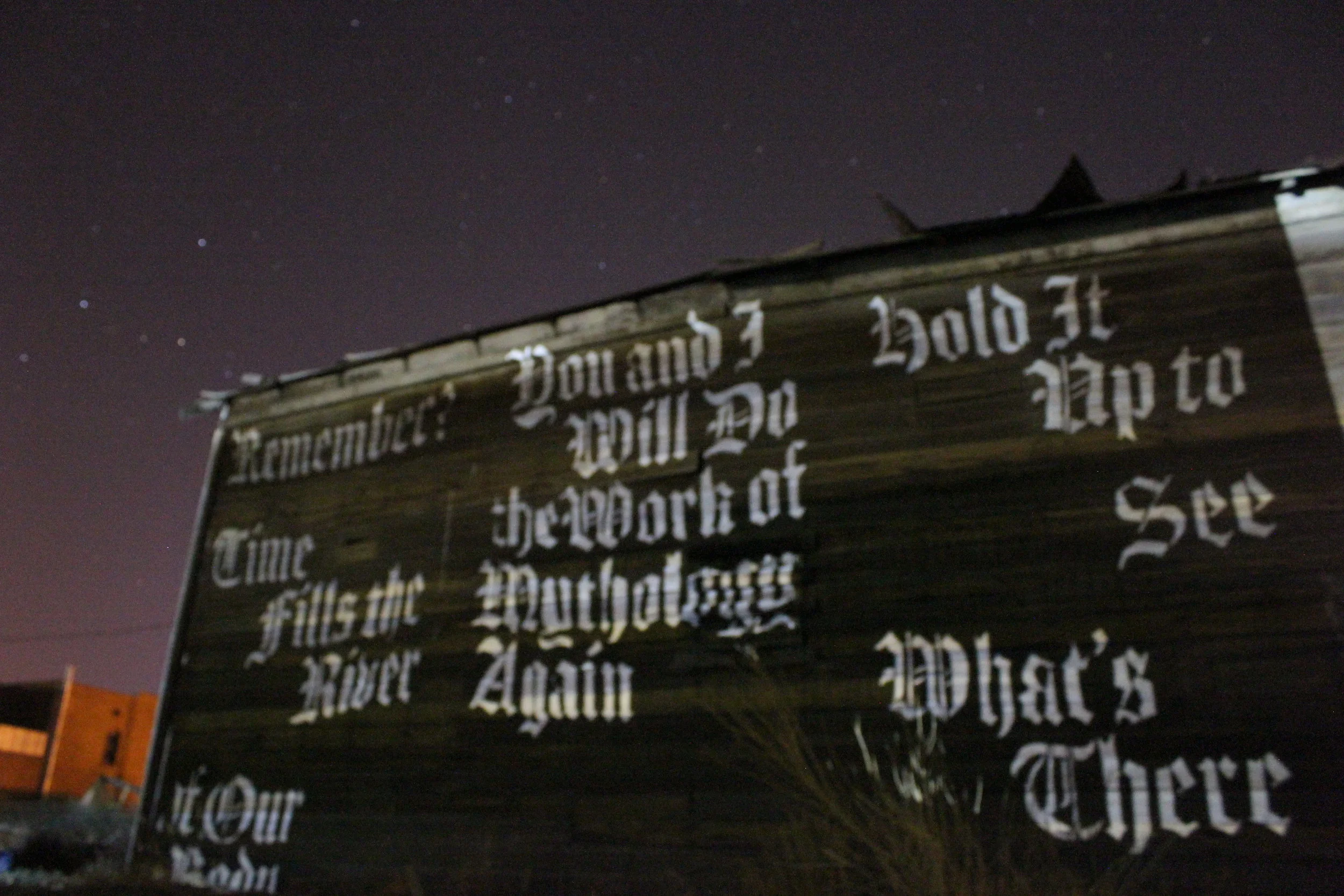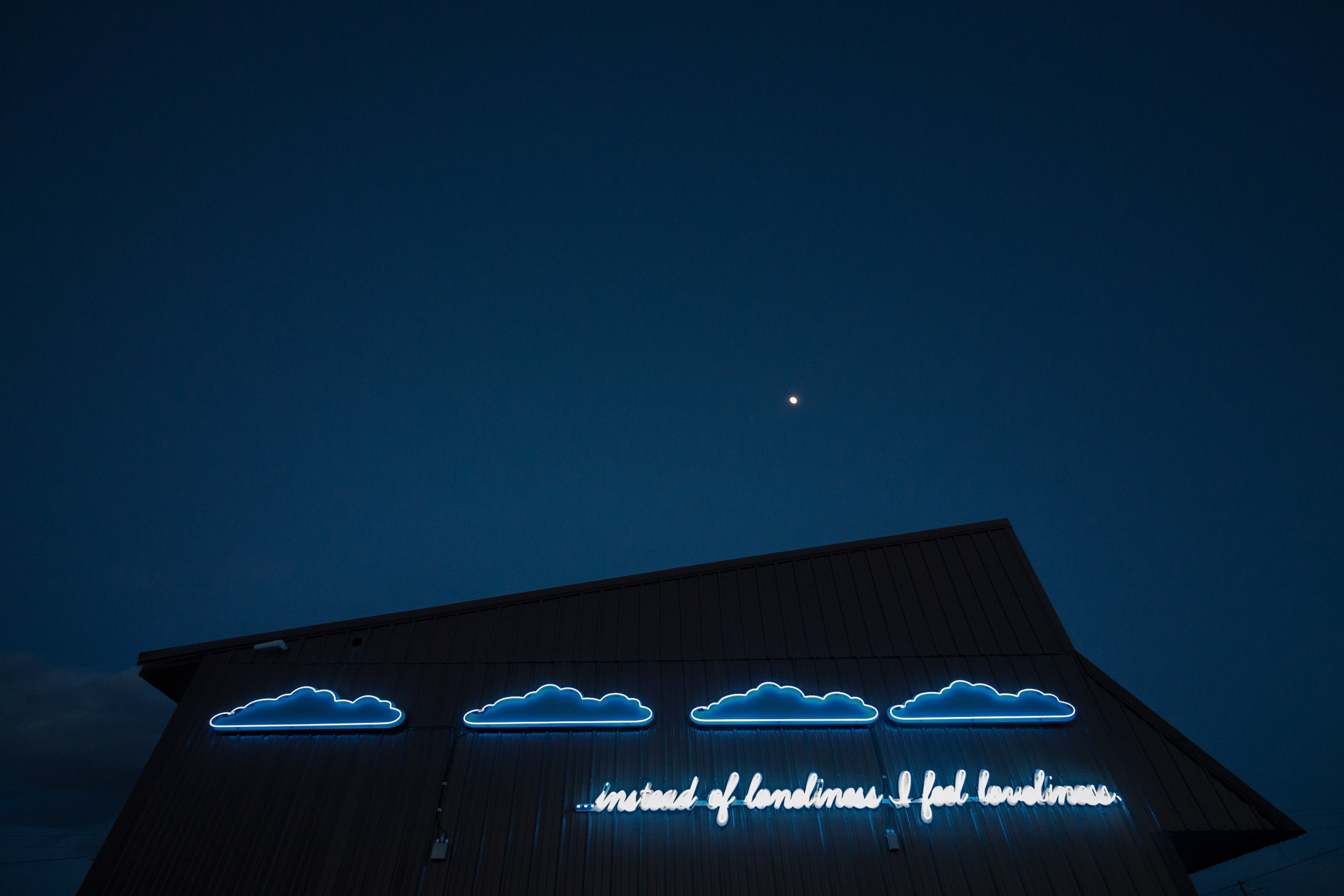Jenn Joy Jameson + Chris Merchant

Jenn Joy Jameson is a cultural worker from Southern California. She spent a decade outside the west where she managed a lucky career as a public folklorist, documenting and collaborating with communities and cultural practitioners in Indiana, Kentucky, Tennessee, and Mississippi, before a return to her home state to work with the Alliance for California Traditional Arts, where she manages cultural arts programs, grants, and media.
Chris Merchant is a photographer and creative researcher based in Los Angeles. For about 10 years he has worked closely with directors and producers, assisting with the creative development process of films, television, and advertising. As a photographer he’s fascinated by the textures of American regionality—or how specific landscapes define local architecture, attitudes, and cultures. Recently, his photographic work has focused on hobbyist subcultures including the documentation of mycology, rockhounding, bird-watching and rocketry clubs.
Before our first date we exchanged maps—a prelude of what was to come.
Neither of these self-made maps were definitive, but they provided a glimpse into how we saw our city—full of gems hiding in plain sight: From old school restaurants, to oddball architecture, artist-built environments, age-old theaters, and unique libraries and collections.
Maps, it turns out, aren’t neutral. They can be a highly personal expression of reference points—a self-portrait of what someone finds interesting, beautiful, or important. They are, perhaps, even more revealing than first-date banter.
As a partnership unfolded, we found in common an ethic and creative practice of paying attention to the details, of valuing what otherwise might be overlooked, and of learning how to relate to ways of being, living, and knowing, outside of our own.
While one of us works as a folklorist, and the other as a photographer, this is the shared value we wanted to bring to our work for Epicenter.
In our time leading up to the Frontier Fellowship, Epicenter proposed an intriguing challenge to us; What if we expanded our scope beyond the boundaries of Green River? What other kinds of cultural, geographical, or environmental regions could be approached? While there are many frameworks we could consider (for example, working within nearby Grand County, or the Colorado Plateau), we decided these distinctions were too slippery for outsiders like us, without relying on years of local/regional knowledge. What we gravitated to instead, were the larger themes of state identity, and all the competing visions that Utah projects.
For example, there’s the vision of Utah as a natural playground, as adopted by the backpackers, river rafters, rock-climbers, van-lifers and Edward Abbey acolytes — whose epicenter resides somewhere in Southern Utah, perhaps triangulated between the “Mighty Five” national parks. There’s the (sometimes) competing vision of Utah of as a state of industry, as symbolized by the industrious beehives dotting the highway signs, whose natural resources have supported the working class histories of coal, copper mining, and uranium prospecting. Of course, one can’t miss the perspective of Utah as a Mormon mecca — the promised land of Deseret, where LDS meeting houses outnumber traditional churches, and the signs of alternative histories and symbologies defy the supposed homogeneity of American spiritual identity. Finally, no popular vision of Utah has been a more constant source of pride and exploitation than its particularly rich indigenous communities—from pre-colonial to contemporary eras.
Of course, by adopting any of these perspectives we risked finding ourselves further out of our depth, lost navigating cultures and histories that can’t nearly be understood within a month’s time. The better approach, we realized, was to embrace our status as visitors in a strange land, or, put another way—as tourists in Utah.
Clockwise: Arches National Park, Temple Square, Golden Spike National Historic Park, Interstate 70
Though “tourist” can be an unattractive role, at risk of superficial and extractive engagement with a place, its people, and its histories, we believe that embracing it presents us with a more honest, if not more authentic, lens to engage with dominant themes of Utahn identity.
With this in mind, tourism became our framework: We could go where other tourists go. We could seek out experiences that are packaged for quick consumption—the places that tell a story about their version of Utah. Then, through a process of active engagement and contextualization, we could begin to see how these narratives do or don’t fit together. We could also watch many of our own assumptions and expectations crumble or expand as we spent time in situ. Ultimately, this project will culminate as a print book—an experimental travel guide—that collects the sum of these experiences in a series of reviews.
What does it mean to be a tourist in Utah? This project is a small contribution to that dialogue.
Clockwise: Scenic Byway 12, Temple Square, Tree of Utah, Spiral Jetty
It was time to make another map...
By looking at the many points of interest in Utah, we started to hone in on commonalities that felt uniquely Utahn (geology, paleontology, Mormon history, rock art, outdoor recreation) as well as sites that felt reflective of larger themes of travel (industrial tourism, cultural tourism, roadside attractions, etc.). Altogether we created a pool of 60 or so potential sites.
In order to narrow our focus to an achievable itinerary, lists were made, brochures were collected, post-its were arranged, and a number of chats were had with Epicenter staff and other friendly Utahns. Still, the task daunted us.
One afternoon in the Epicenter basement we wrote down all the dynamics we could imagine at play when we think of “tourism.” Among them, positive associations like access, consciousness, affirmation, creativity, engagement, inspiration; troubling associations like colonization, consumption, and commodification. The most compelling, though, were the neutral associations which we see employed in so many productive and destructive ways: patriotism, heritage, discovery, ownership, development, power, reenactment, social media, progress, and so forth.
Through lots of deliberation and the support of a few Chow Hound milkshakes, we agreed to hone our attention on a small selection of sites that hit a number of these complicated marks.
Epicenter basement office
This self-guided tour of Utah took us to a number of dynamic destinations, each presenting their own complexities. We visited the Kennecott Copper Mine, to learn how a heavy industrial site is packaged as a must-see tourist destination for Salt Lake City visitors. At Arches National Park we looked at the historical role which tourism-focused marketing and development have played in shaping the park and the nearby town of Moab.
Kennecott Copper Mine at Bingham Canyon
Arches National Park and Moab
We visited Hole N” The Rock, an iconic roadside attraction featuring a 14-room house blasted into sandstone, whose backstory emblemizes both Utah’s pioneer attitudes and the boom of mid-century roadside Americana. At Golden Spike National Historical Park, we joined the crowds who came to watch immaculate replica locomotives re-enact the completion of the Transcontinental Railroad (a monumental achievement of private industry, which is thought to mark the end of the “Pioneer Era” of the west).
Hole N” The Rock
Golden Spike National Historic Park
Later, at This is Place Heritage Park, we delved into Utah’s pioneer narratives, as illustrated through living history re-enactments set in an elaborate recreation of an early Mormon settlement. Finally, we visited Topaz Museum, a site examining the difficult history of the WWII-era Japanese American internment camp built near the town of Delta, which aims to create a space for local honesty and national reconciliation.
This is the Place Heritage Park
Topaz Museum and Topaz Internment Camp Site
As we visited sites we sought to practice active modes of participation and observation.
We’d go through a pre-visit research process, gathering any salient historical backstories, stats, and anecdotes for each destination. During our visits we’d watch closely for the ways narratives were being presented to us through marketing materials, exhibition copy, and docenting. We paid particular attention to details that complicated or confirmed what we’d previously known, and flagged those that deserved further understanding. As we made our site visits we employed everything from field notes, to photography, to audio recordings, and the collecting of ephemera/souvenirs, as well as casual conversations with tour guides and travelers alike.
Another form of participation came through actively reflecting on our personal processes as tourists and visitors. As we grappled with these questions, we were presented with the possibilities, anxieties and contradictions of contemporary tourism:
To what standard should we hold ourselves as travelers?
What kinds of photos do we take, for what purpose, and for whose viewing? What else do we take? What kinds of “souvenirs” do we seek when we travel and why?
What stories are we telling with our own re-tellings of the site?
Which experiences are wrong for us to engage with, even though we are invited to? Even though we really want to?
How can we be better, more conscious travelers in the world, given our positioning as white, middle class, cisgender people?
How can we approach these sites with equal parts humility, empathy, and self-awareness, while embracing critical thought in what’s presented--and for whose benefit?
Our response to this process has formed the basis of this project — a new kind of travel guide. One that considers both beauty and local impact. Conservation and access. Historical sources and our personal perspectives. Representation and interpretation. A travel guide that embraces vulnerability, exploration, and grey areas.
Above all, the six Utah destinations that anchor our book offer timely pathways to examine joy, power, extraction, culture, narrative, and how we engage with these things as visitors in a new place.
Clockwise: Goblin Valley State Park, Bryce Canyon National Park, Arches National Park
There are real possibilities to being a tourist — to acquainting yourself to a new culture, landscape, way of being or knowing. We stand for a world where travel and tourism are practiced honestly and equitably, in ways that build deeper understanding of our environment and greater empathy between communities.
Participating in this Frontier Fellowship project with Epicenter has been an incredible journey, and an even more incredible privilege. We’d like to thank Maria Sykes and the rest of the Epicenter staff, aided by Frontier Fellow advisor Sarah Lillegard, for their invaluable support; for keeping us grounded during this process and for their valuable perspectives on the great state of Utah.
Sun Tunnels















































